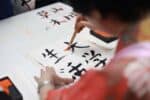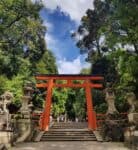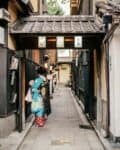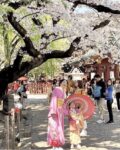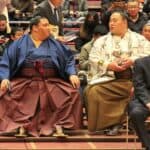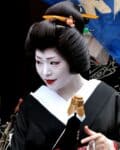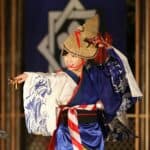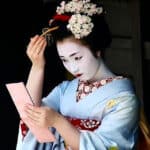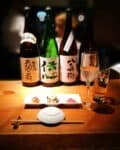Both Korea and Japan are small, Eastern Asian countries with bountiful coastlines and vivid cultures.
Due to their geographic proximity, Japan and Korea naturally share some distinct cultural similarities, many of which steming from the influence that Chinese culture has had on both Korea and Japan, as well as some stark differences. But in terms of culture and lifestyle, are Korean and Japanese similar?
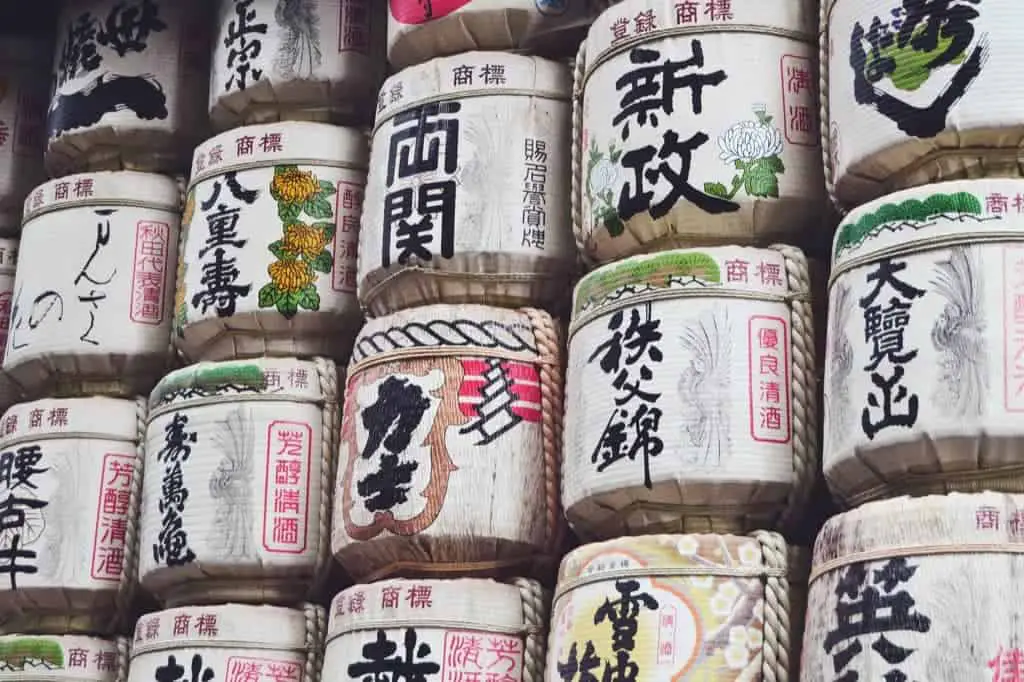

It can be useful to look at the similarities, differences, and history between Korea and Japan to truly understand their mutual relationship.
Are Japan And Korea Similar in Culture?
So is Japan and Korea similar? Are there any Japan and Korea similarities and differences? Though they are geographically close and have many similarities that go back to antiquity, Korea and Japan are very different. For the most part, Korea is like a smaller and less wealthier version of Japan.
Japan is a developed, rich nation with one of the world’s largest economies. It has one of the most highly industrialized and technologically advanced economies in the world. Japan also makes some of the best luxury cars in the world. Japanese automakers have a reputation for making high-quality cars that are both luxurious and reliable.
By contrast South Korea has had what can be described as an “economic miracle,” fueled largely by such heavy-duty industries as shipbuilding and steel making which were government subsidized during their early stages so they could compete against more established Japanese counterparts.
Japan is a largely homogenous society with little immigration, whereas Korea has rooms of ethnic diversity in its capital city such as Albanian Muslims (or Hui-kong) who live together with the Koreans.
You can learn more about Japanese art and culture in the following posts:
Principles of Ikebana
Japanese Garden Gravel
Best Moss For Kokedama
Japanese Garden Ideas
How Did China Influence Japan And Korea?
China has had a significant influence on both Japan and Korea.
So how did China influence Japan and Korea? China influenced Japan’s culture, language, writing system, military tactics and technology whereas Korea was influenced by Ming dynasty Chinese migrants who relocated to Joseon through merchant trader routes along with Confucian missionaries from various places like Mongolia.
From the Chinese civilization, to the Japanese culture, to Korean music and food – China’s history is everywhere in East Asia. However, not all of these influences are positive.
For example, China began importing goods from Europe which made trade between Europe and China more profitable than trade with Japan or Korea.
The two countries then started trading with each other instead as they didn’t want to be left out of this lucrative business opportunity. This was an instance where a negative impact led to a positive outcome for both nations!
China’s influence affected Japan and Korea in many ways.
For example,
- The agricultural revolution that happened around 3000 BC is attributed to China introducing new crops and animals to the region.
- The social structure of ancient Chinese kingdoms influenced the development of a corresponding social system in Japan.
- Confucianism became influential during 600 AD but was eventually banned during World War II after WWII for its support of communism which correlates with why Confucianism had an impact on Korean culture and society.
- Koreans historically followed a similar culture as Confucius, with their ideals being small family values and strong work ethic/perseverance – these are all characteristics that tie back into Confucius’ teachings.
Were Japan and Korea ever a part of China? No, Japan and Korea were never a part of China. The idea that Korea was ever Chinese territory is a myth. The northern half of the Korean peninsula belonged to China when Emperor Han Wu conquered it, but Seoul never did and Japan has always been an independent state.
Did Japan And Korea Have A War
Japan and Korea have had wars in the past. The most significant conflict between the two countries was the Imjin War, which broke off the relationship between Korea and Japan at the end of the 16th century.
Japan also invaded Korea twice in the late 16th century, but both invasions were unsuccessful.
In the late 19th century, Japan cut off Korea from Qing Chinese suzerainty, and fighting wars with those two countries on the issue became a high priority for Japan. Japan took control of Korea with the Japan-Korea Annexation Treaty of 1910, and Korea became a colony of Japan.
The relationship between the two countries has been characterized by cultural exchanges, economic trade, political contact, and military confrontations for over 15 centuries.
However, the most recent conflict between the two countries was not a war but a political and trade dispute that began in 2019 and is tied to lingering wounds dating back more than 100 years. The dispute began when Japan imposed export restrictions on South Korea for three key materials used in the production of semiconductors and displays, which are vital to South Korea’s economy.
Japan claimed that the restrictions were due to national security concerns, but South Korea saw it as retaliation for a long-standing dispute over compensation for forced labor during Japan’s colonial rule of Korea. South Korea responded by removing Japan from its list of trusted trade partners and filing a complaint with the World Trade Organization (WTO). The dispute escalated when South Korea announced that it would terminate an intelligence-sharing agreement with Japan.
The dispute ended in 2023 when Japan reinstated South Korea’s preferential status, ending the four-year trade dispute that began in July 2019 when Japan removed South Korea from its “white list” of countries given fast-track approvals in trade as ties deteriorated over compensation for Japanese wartime actions
Similarities & Differences Between Japan And Korea
Japan and Korea share a long common history. Their geographic proximity to each-other and to China ensures a constant interaction of trade and conflict.
So is Korean and Japanese culture similar? Overall, Korean and Japanese cultures do share more similarities than they have differences. The two cultures are similar in language structure, competitive education, and concern for public image. However, while both nations are characterized by hard work and collectivism, Japanese values like harmony and tradition contrast with Korean values of progress and nationalism.
The island nation of Japan has less international interaction which has led to forming a society more inclined to individualism and imperialism, while the peninsula of Korea, bordering China, has had to fight harder for its seat at the international table of commerce and developed more nationalism and collective trend-following.
Both of these countries have cultures that were shaped not only by the individuals, but by outside influences and unique histories which has influenced them greatly.
One of the biggest similarities resides in the structure of the language and, specifically, the use of honorifics to respectfully address superiors. Additionally, Korean and Japanese cultures share more similarities in language, education, societal structure, and a concern for public image.
It may seem at first glance that these two cultures are very similar, but there are also important distinctions to be made in each area that make their cultures quite different.
The shared Chinese influence between these two cultures has resulted in many lasting similarities, as well as many differences. Therefore, a closer look at the individual aspects of each civilisation depending on the cultural spheres concerned is required to appreciate the distinctiveness of these two fascinating cultures.
Language – Is Korean And Japanese Similar?
In terms of language, many wonder is Korean similar to Japanese, so let’s answer that question. Korea and Japan share plenty of similarities in the structure of their language. Both languages include a written system that is derivative of chinese characters. The languages also share a similar pronoun system and particle system, and a similar grammar in their subject-object-verb structure. It is often said that it is easiest for Koreans to learn Japanese as a second language and vice-versa.
Additionally, both Korean and Japanese include a complicated system of honorifics. Honorifics are a title or word implying status, politeness, and respect. This means that their languages both allow the speaker to show different levels of respect based on who they are addressing.
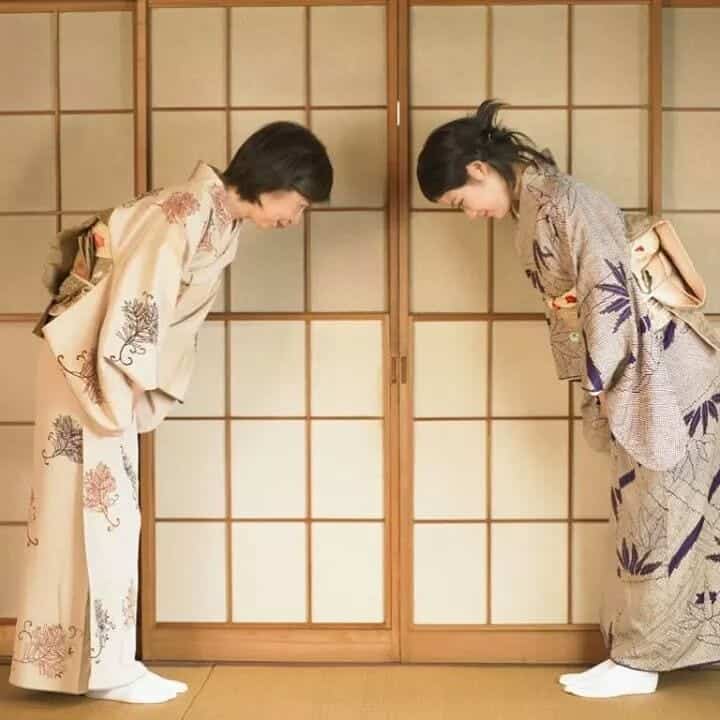
Based on a shared distant ancestry and influence of Buddhist and Confucian values, the biggest similarity between Japanese and Korean cultures is their prioritization of an age-based ranking system that permeates every social interaction, because it is an inherent part of both nation’s languages.
Both societies share this philosophical and ethical chinese principle – confucianism. While confucianism does play a role in Japanese culture, it plays an even greater role in Korea. In Korean culture, this can even affect their language by dictating what honorifics should be used to show respect.
Korean culture is more upfront about the importance of social hierarchy, where someone may be asked their age in a first introduction, whereas in Japan it is rude to outright ask age, especially to women. Instead, the Japanese honorifics are most important in business settings, which makes presentation of business cards equivalent to saying “this is my status.”
As a result, business cards are taken with two hands, pointedly studied, and put away in a designated business card holder. So even in this close similarity of culture and language, it is easy to identify and contrast where the two cultures differ.
Both Korea and Japan are concerned with their public image, otherwise known as the concept of face. In this situation, Face is a sense of worth that comes from knowing one’s status and reflecting concern with congruence between one’s performance or appearance and one’s real worth.
This idea, originating from China, is important in both Korean and Japanese cultures. While this idea is mildly important to the Japanese, it is incredibly important to the people of Korea. The concept of face is one of the cornerstones of Korean society.
Education, Work and Religion Spheres
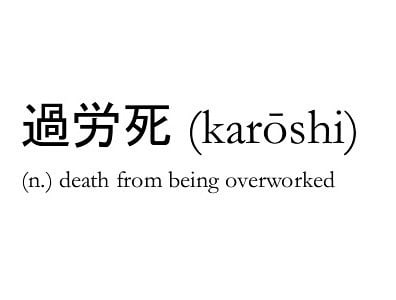
The Japanese system includes six years of elementary school, three years of junior high school, three years of high school, two or three years of junior college or four years of college. The Japanese system is renowned for its high level of education and engaged students.
South Korea also has an incredibly strong and reliable education that includes six years of primary school, three years of lower secondary school, and three years of upper secondary school which can be academic or vocational. Both systems are highly competitive.
Both Korean and Japanese cultures prioritize individual academic success as a reflection of the student’s family and a stepping-stone into the corporate world. As a result, both cultures have high-pressure schooling with emphasis on high testing scores.
Reverence for elders and prioritizing work-ethic also manifests in long, often unpaid, hours at the office six days a week. It is disrespectful to leave before your boss. Such prioritization of work has lead both countries to success as tech giants, while also having a hand in skyrocketing their suicide rates and tanking their fertility rates.
When it comes to work ethic, both Japanese and Korean cultures work hard, but in slightly different ways. Both societies have a similar work ethic and value efficiency and order. They each boast a highly effective workforce.
Japanese culture is more accepting of a natural balance to things that requires everyone to dutifully follow procedural steps and consistently fill their role.
Korean culture is more fast-paced and cutthroat, with more inter-personal competition. This difference in work styles demonstrates how collectivism in Japan is more societal, while collectivism in Korea is more family-oriented and less sociological.
Despite their geographic proximity, Korea and Japan also have very different religions. The most common religion in Korea is Christianity, followed closely by buddhism. Japan on the other hand is composed mainly of Shintoism, followed by buddhism.

Social Life
These two countries both share a sense of collectivism. Collectivism is the opposite of individualism, which favors freedom of individuals over collective or state control. In collectivism, the individual is subordinate to the state, nation, race, or social class.
In Japanese culture, this collectivism is more society-centered and in Korea, this is more family-centered. This means that though they apply the same values, Korean values reflect internal collectivism while Japanese values reflect external collectivism.
Primarily due to social pressure, Korea and Japan are largely crime- and drug-free cultures. Free time is not as prioritized as hard work and discipline, which has lead both nations to popularize martial arts, based in a long-standing history of warrior training.
In Korea, it’s the fast-paced high-kicking spinning Taekwondo, while in Japan the well-placed powerful striking and blocking of Karate dominates. Japan has also had less demand for combat as an island nation, so its ancient warrior practices like Sumo wrestling involve a lot of philosophy and spirituality in addition to physical technique.
Want to know more about sumo? Read also Can Sumo Wrestlers Have Tattoos?
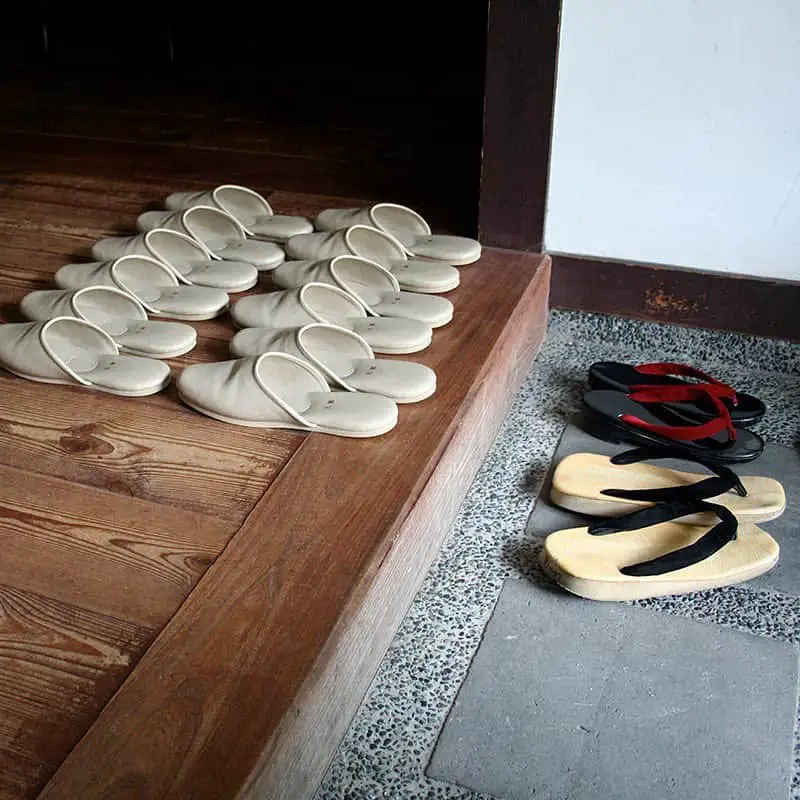
Home life between Japan and Korea can look similar: shoes removed at the entrance of a home, and floor seating instead of table seating. However, the social tone between a Korean and a Japanese home will be very different.
When chumming around with friends in Korea be prepared for a ribbing—friendly teasing stemming from affection but which can seem mean or rude to an outsider. Japan is very different in this regard, having a strict distinction between one’s inner world, opinions, and emotions versus the way they display themselves in public.
If you are invited to a friend’s house for dinner in Japan, they consider you very close, whereas Korean dinner invitations are more casual along Western norms. However, the small urban apartments of Korea prevent many dinner parties, compared to Japan whose housing is more individual houses.
In terms of the cultural sphere of romantic relationships, Japan and Korea are very different. Koreans are more casually touchy and friendly towards strangers, while Japan has very little public displays of affection, and sometimes very little private displays of affection as well.
Surprisingly given this social trend, Korea is a little more traditionally sexually conservative, while Japan’s culture is more sexually liberated.
Food
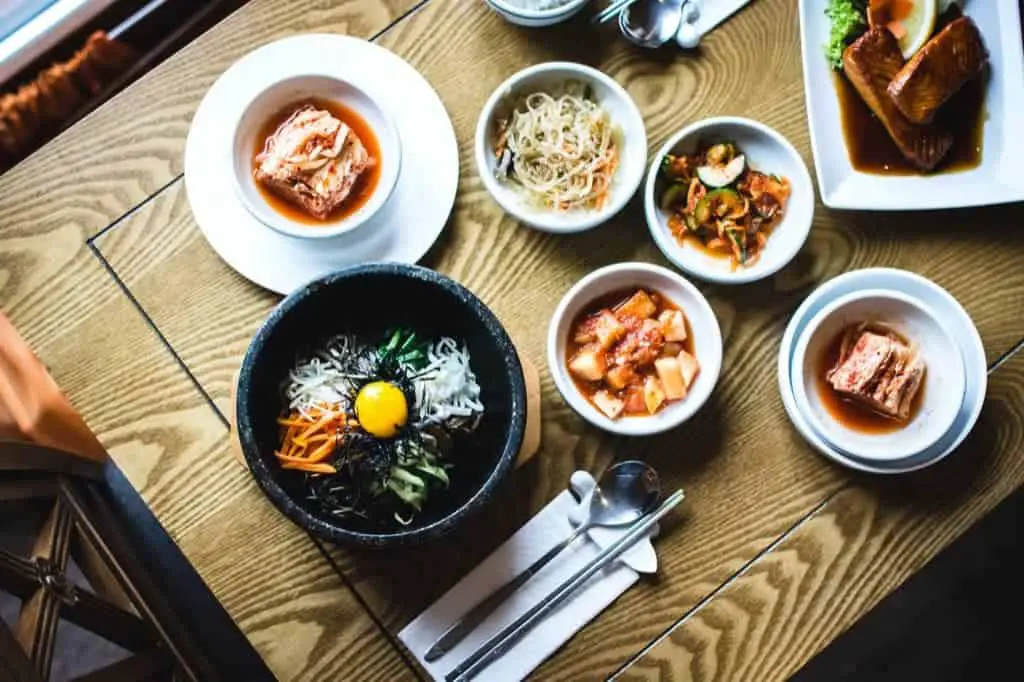
Of course, everyone has to enjoy going out to eat sometimes. One similarity between Korean and Japanese culture dining is that both countries use chopsticks to eat, but Japan uses thin, pointed bamboo chopsticks to delicately de-bone fish, and Korea uses metal chopsticks that can survive the heat of Korean barbeque, along with forks and spoons.
In Japan, the art of sushi requires the chef’s expertly trained hand to emphasize the freshness and quality of the fish and other ingredients. It is up to the chef, not the customer, to decide food pairings which are usually subdued flavors.
In Korean Barbeque, however, foods are simpler with bold, spicy flavors and endless combinations for the customers to create.
To taste the difference between the two cultures in a very comparable setting, both Ramen noodle soup and Bibimbap are go-to bowl meals with various ingredients and often topped with an egg.
Whereas Ramen follows a pretty standardized list of ingredients including wheat noodles and broth, and a skill which one can master, a quick search for bibimbap recipes has three entirely different lists of ingredients. This makes sense given that “bibim” means mixing various ingredients and “bap” means over rice.
So once again Japanese culture has an artful formula with less variation, and Korean culture is more about bold yet simple formulas with more variation. If you want to read more on Ramen and its technique, you could check out this book by Naomi Imatome-Yun.
When it comes to paying, in Korea it is expected that the highest ranking person at the table will pay for the whole meal, while in Japan splitting the bill is more common.
You can read more about Japanese food here.
Introversion vs. Extroversion in Art and Beauty Spheres

One of the clearest ways to compare and contrast both cultures is in their definition of beauty.
Japanese culture is based on subtlety, nature, and quality. Art forms that require time, precision, and can be done in quiet solitude are highly valued in Japan. Take the ancient Japanese art of bonsai which requires immense patience and adherence to detail, while honoring the natural qualities of the small cultivated tree.
Origami is another Japanese art form that is small, individual, quiet, and precise. Japanese art can be very formal and revered, but in a more casual sense it often veers cute, as in kawaii.
The legendary Samurai were unique to Japan. These military nobles have served as inspiration for many famous stories in literature and film, as well as countless pieces of art both ancient and modern.
These Samurai were a part of Japan’s feudal system and were a mainstay of Japanese culture from the 12th century up until 1870. Samurais were known for their code of virtues, high tolerance for pain, and their loyalty to those that they served. Samurai were often depicted wearing two distinct swords, which quickly became known as samurai swords. The imagery of these swords soon became synonymous with warriors. In fact, they had such a lasting impact that you can still purchase handmade Samurai swords like the one seen here.
Korea on the other hand has a domineering hand when it comes to art and culture. Compared to the solitude which Japanese art stems from, Korean art and trends depend on large-scale participation
An important aspect of current Korean culture is Korean pop, or K-pop, which has become a global phenomenon in recent years. This music style blends Korea’s appreciation for aesthetically pleasing visuals, dedicated work ethic, and fun atmosphere into a music style that is popular across the globe.
K-pop grew in popularity among Koreans as television started to become less censored after government reformations. K-pop has become so popular worldwide that it has spawned an entire industry in Korea.

K-skincare is a close second, going from a sensational 10 Step Skincare Routine that seemed like a fleeting trend, to Korean Skincare Products stocked in major retailers around the globe. In addition to their dazzling celebrities and promises of glass skin, Korea has one of the world’s highest rates of cosmetic surgery. An inherent part of cosmetic surgery is its ability to pass off as natural despite the artifice.
Contrastingly, the Japanese ideal of beauty in the form of the Geisha purposefully leaves a stark line between a nude nape of the neck and the white face paint, in order to acknowledge the artifice at play.
Although these examples may come from different points in time, they provide an interesting comparison between the two countries.
These two pervasive ideals may help illustrate the cultural differences between Japan and Korea.
While Kpop is centered around entertainment, color, fun, and appearance, Japan’s famous samurais embody respect, ethics, and order. Many believe that Korea’s culture tends to be more colorful and exciting, while Japanese culture remains sophisticated and respectful.
Global Relations
When it comes to measuring up their own culture, Japan is generally content to measure itself against Japanese standards. Qualified academic elites can speak only Japanese and still be highly respected.
On the other hand, Korea is at the global table on a cultural scale. English-language fluency is more expected, especially for elite professionals and academics.
This final comparison is a good sum of the general differences between the two cultures: Japanese are happy to fill their role and find internal cultural harmony, whereas Koreans are fast-paced toward progress and camaraderie on a global scale.
History and relations between Korea and Japan
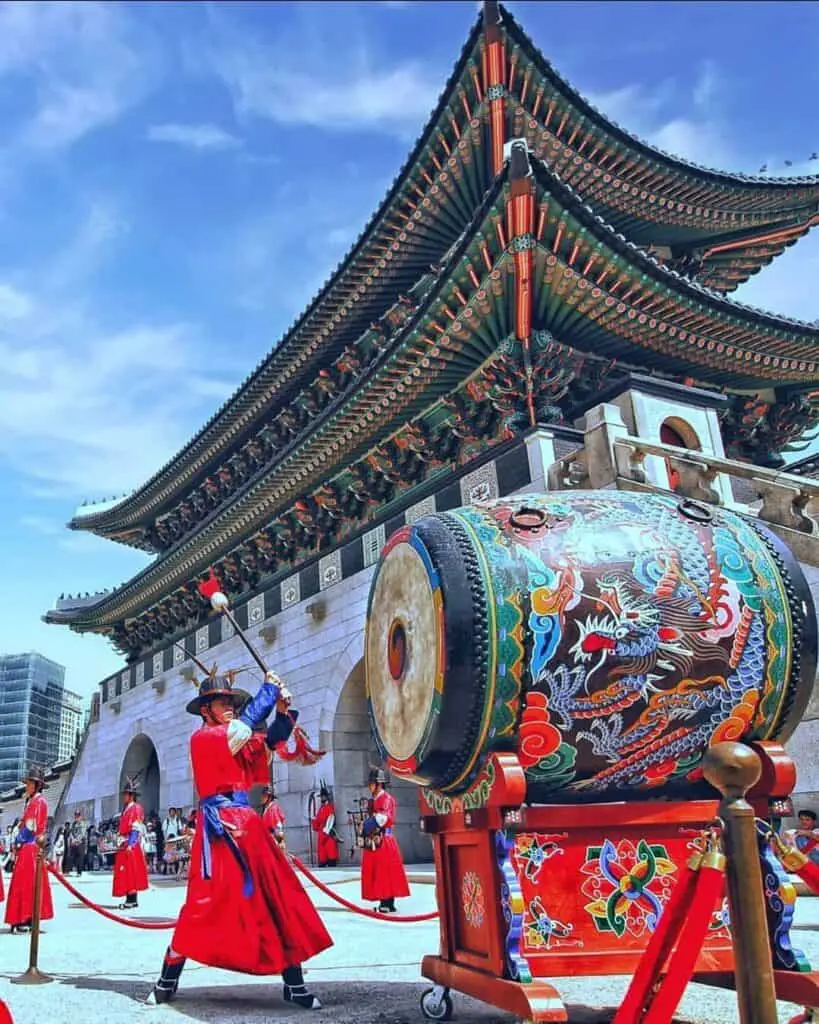
Despite sharing similarities in their language structure, rigorous academic programs, work ethic, collectivism, and their belief in the importance of the concept of face, Korea and Japan have been divided by political and military differences and have an ancient and complex history of interactions that continue to define their relationship.
This has led to some struggles between the two nations over the years.
Although they experienced eras of peace and cultural exchange, Korea and Japan have also warred with each other off and on throughout the centuries. In the twentieth century these tensions reached a boiling point and created a rift that would last until modern times.
Japan had attempted to claim the land and resources of South Korea many times throughout the centuries, and succeeded in taking over for a time in the twentieth century. Tensions rose to a peek in 1910 when Japan annexed Korea. This effectively turned Korea into a Japanese colony under full control of the Japanese people. When Japan began to prepare for a war, they used Koreans as unwilling laborers to help prep supplies and equipment. This obviously did not fit well with the Koreans which caused a huge outrage among their people.
This naturally created a tension between the two nations that persists to this day.
When World War II came to a close, Japan was stripped of its empires and of all territories under its control. Read about how Japanese culture has changed after WW2.
A 1965 treaty attempted to restore a peaceful relationship between the two countries. Japan offered financial aid to Korea in an attempt to patch up the unwilling labor forced upon Koreans in the 1930s. However, both Japanese culture and Korean culture encourage citizens to be unwavering which has made it difficult for the two countries to reach a lasting arrangement.
Many Koreans believe that this matter is yet taken care of and that they are owed more from the Japanese. This has led to public political displays and boycotts of Japanese goods.
Many Japanese, however, believe that the matter was firmly settled during the 1965 treaty and do not intend to offer further financial aid to the people of Korea. This flare up in tensions resulted in the Japanese revoking Korea’s favoured trade partner status and toughening up on exports to Korea.
Korea responded by choosing to disband their intelligence sharing pact with Japan.
Tensions between the two nations who share such similar cultures have recently shown signs of wavering. South Korea recently decided to maintain the military intelligence sharing pact. This olive branch was extended to Japan in 2019, and may help ease the relationship between the two powerful nations.
Conclusion
Despite having many similarities, both Korea and Japan have elements of their culture that are distinct only to them.
As a whole, Korea tends to be more heavily influenced by Chinese culture, while Japan has been heavily influenced by the ideals of western cultures. Korea gets its Chinese influence due to geographic location, while many of Japan’s western influences appeared during the United States post war occupation.

